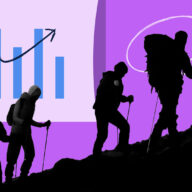As each year passes, the continual march of technology has yet to ease up. Tech is still advancing at a rapid clip, and at the same time, software companies crop up at an even more rapid clip. Each promising to make work easier, more productive, and more profitable. It’s enough to make your head spin.
This makes, digital dexterity incredibly important in today’s work environment. But what exactly is digital dexterity? And how can you implement it in your organization?
What Is Digital Dexterity (And Why Does It Matter?)
Simply put, it’s the ability of your organization and its staff to adapt to changes in technology. It’s become a bit of a buzzword, which is unfortunate because it’s an important and powerful competitive advantage for any business that possesses it.
The move to cloud-based Software-as-a-Service (SaaS) solutions over the last few years, with the accompanying transition to a release-now, polish-later development approach, has really highlighted the need for more digital dexterity. In practice, it means that the software you’re using today could look (and function) differently in a year or two. Teams need to be on their toes to keep up.
In fact, we’d go so far as to say that some degree of digital dexterity is now a necessity, rather than just a competitive advantage. If your organization can’t keep up with the rapid flow of change, it’s going to miss out on the powerful benefits that these SaaS platforms offer, and productivity will suffer as a result.
This point was really hammered home when the COVID-19 pandemic forced businesses to shift to a remote model. Some teams—even entire companies—were not prepared for the cultural and technological leap this entailed, and their output really suffered as a result.
Now, not every new technology lives up to the hype. However, some platforms really do make good on their promises, and organizations should be prepared to latch on and make the most of them—before the competition does.
What Does Digital Dexterity Look Like In Practice?
Organizations that have high digital dexterity tend to have some qualities in common:
- They tend to be forward-thinking and take a digital-first approach. Organizations with a high degree of digital dexterity are often those that consider digital solutions first. This makes sense—if you’re focusing on the potential shortcomings of software and tech, you won’t be well-positioned for the advantages.
- They tend to have a flexible mindset and are willing to adapt. This may be more of a cultural characteristic, but companies that emphasize flexibility and “scrappiness” tend to do better with the rapid pace of change that digital dexterity entails.
- They make data-driven decisions. If the numbers indicate that embracing a new software or technology solution makes more sense for the business, the business adapts.
While just possessing these qualities won’t automatically give your organization digital dexterity, they certainly help. More importantly, serve as a useful barometer when gauging how your business will handle sweeping technological changes. For example, if the company is rigid and inflexible, it’s not likely to embrace the frequent changes to workflows that digital dexterity often entails.
4 Tips To Help Foster Digital Dexterity Into Your Organization
Now that you have a solid grasp of what digital dexterity is, why it matters, and whether your organization is lacking in it. Your next question is probably, “What can I do about it?” These four tips should get you started.
1. Locate And Strengthen The “Weak Links” In Your Organization
Not all of your employees have the same skillset. And that’s a good thing! The varied talents and abilities among your staff make for a diverse and powerful organization that ultimately benefits from the variety of skills.
However, when you’re trying to instill a single principle across all of these diverse employees, this variation can cause some problems. If you need everyone to be able to adapt to changing software rapidly, but some of your employees lack computer proficiency, that’s ultimately going to hold the whole team back. Other staff will have to pick up the slack, and frustrations can brew.
For this reason, it’s important to make sure everyone is on the same page when it comes to basic tech skills and computer literacy. If people are struggling to adapt, help them! Here are a few ideas:
- Offer training programs to help shore up skills.
- Provide incentives to encourage growth, such as small bonuses for quick adoption of new tech.
- Conduct polls and surveys to see who needs help and in what areas.
- Pair up team members with mentors that can teach and train them on a daily basis.
Whatever tactics you use, the key is to ensure that you’re constantly looking out for and strengthening the weak links. This helps keep the entire chain strong.
2. Emphasize Organizational Clarity And Transparency
Make sure staff know which tools to use and when. Let’s use a common example—say your company uses email and a chat tool to communicate. Does everyone know when to use each of these tools to communicate?
If not, employees will need to check both of these, because critical messages may be coming into each channel. This causes confusion for both the sender and receiver of the communication.
Why is this so important? Well, when employees need to constantly adapt to changing technology, clarity on the purpose of each piece of technology should be paramount. The more confusion present, the less productive workers will be, and more resistance to future changes will brew. Confusion is the enemy of digital dexterity.
One great way to do this is to document your workflows. By doing this, you can alleviate confusion for new and old employees alike, while also optimizing your processes. This can be a time-consuming process, but the results are often very worthwhile.
3. Shift The Focus From How This Benefits The Business To How It Benefits The Individual Employee
Digital dexterity is a concept that can have transformative impacts on an organization but can seem inconvenient and troublesome to employees on an individual level. Too often, leaders get excited about the big-picture effect and forget that they’re not always the ones in the trenches dealing with these changes every day.
One way you can help combat this is to reframe digital dexterity and show your team why it matters to them as individuals. Here are some examples:
- Digital dexterity is an in-demand skill that can help them reach future rungs on their career ladder.
- It provides useful skills that can be applied outside the workplace. Nearly everything has at least some digital aspect these days, so being able to jump right into these changing environments can help with hobbies, home maintenance, and other areas of a person’s life.
- Making it through a transitional period at an organization provides valuable experience and gives people the ability to help others do the same, whether at the current company or a different one. It reinforces the person’s commitment to the current employer and makes them appear more desirable to potential future employers.
By giving your team a sense of personal investment in the process, you also give them an incentive to dive in and see it through to completion.
4. Develop Digital Dexterity “Ambassadors” To Reinforce The Importance And Coach Peers
We touched on weak links and the importance of helping them improve in a previous section. Well, if you have weak points, it implies that you also have strong points.
In other words, some of your team members are likely much more comfortable in a digital environment and are able to adapt much faster. Leverage these employees! They can become powerful ambassadors and teachers among your other team members.
One way you could implement this is by creating an ambassador program that takes your most digitally advanced employees and pairs them with those that need more help. The ambassadors gain mentorship and leadership abilities while those they help get valuable work skill coaching—a win-win.
Make Digital Dexterity A Key Part Of Your Culture
Digital dexterity has risen to become one of the most critical facets of a business. Getting it right can turn a sluggish, old-fashioned team into a digital powerhouse that can adapt to anything. Getting it wrong can mean the death of the company—it’s just that serious.
The ultimate goal for your organization should be to have digital dexterity ingrained in the company culture. From top leadership to entry-level employees and interns, it should be fully integrated, assumed, and expected.
Of course, it can take a long time to get to this point. It needs to be done with intentionality and focus—one step at a time. By implementing the above strategies, you can start strong, but patience is also important. Just remember the old adage: anything worth doing is worth doing well.





 )
) 





































